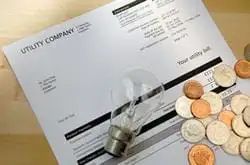Campus experiments with solar power
By Arizona Daily Wildcat
Electrical Testing & Commissioning of Power Systems
Our customized live online or in‑person group training can be delivered to your staff at your location.

- Live Online
- 12 hours Instructor-led
- Group Training Available
From students entering competitions with solar houses, to Arizona Athletics, the UA is taking advantage of its most plentiful renewable resource.
"We have the land, we have the sun, we have a community that's very interested in solar," congresswoman Gabrielle Giffords said when she came to tour the Solar Decathlon all-solar house.
The Solar Decathlon is a competition in Washington, D.C. in which 20 schools from around the world compete against each other to build the best all-solar-powered house.
The houses are judged on everything from architecture to how efficiently the laundry can be done. This is the first time the UA, the only team from the southwest, has entered the competition.
The house has many innovative features, including a wall made of the same plastic used in water bottles that should boost the level of insulation in the house, said Sherwood Wang, an architecture senior.
"I'm very competitive. I want our team to win. I'm counting on you guys," Giffords told the students at the end of the presentation.
Giffords also offered to provide anything that would help the team and expressed admiration for their progress with solar energy.
"What we see here today at the U of A is some of that technology being put to use," she said.
For nearly two years, the Arizona Research Institute for Solar Energy has provided leadership and collaborative support to solar projects on the UA campus, said Meredith Barinson, an AzRISE member.
"The target is really the big pictures and we need to do a lot of work to get where we need to be," Barinson said. "We can't do it alone."
Arizona Athletics is also getting involved in the solar movement, as they recently installed an automatic solar-powered gate at Arizona Stadium, Gate B. There are also plans to build a new diving well that uses a solar-powered water heater, said Steve Kozachik, associate director of athletics.
The gate, which was funded by Arizona Athletics, is automatic and uses a keypad powered by solar panels, he said. The gate had to be updated because there were problems with people leaving it open at night.
"It's amazing. I go home at night and the gate's closed. It's like magic," Kozachik said. "It's cheaper than if I had put in an electric gate."
The diving well heating unit is being funded by a grant and should be installed by the end of the summer, he said.
The Associate Students of the University of Arizona sustainability committee is also excited about making use of solar power on campus.
Mark Sholin, chairman of the energy committee, is one of the members working with Facilities Management and Residence Life to put solar water heaters in the dorms.
Kaibab-Huachuca Residence Hall will be the first dorm to have solar-powered water heaters, he said. The dorm has two halves, each with its own water system, so they will be able to compare equal variables.
The plan is to install the solar water heater in just one side of the residence hall to see how effective it is and how much money is saved. After the data is collected and analyzed, they will then see if they want to continue with the solar-powered water heating in the rest of the dorms, Sholin said.
"Right now we're just going to start with one for a pilot project," he said.
He is estimating that the project will cost $20,000 to $30,000 to start up, but it should save money in the long run.
Facilities Management approached the ASUA sustainability committee with the idea for solar water heating because they were facing the prospect of having to install a new pipeline to get more natural gas to the university, Sholin said. Instead of spending millions on a pipeline, they are hoping to save money and be more ecologically friendly by using solar energy.
"What I'm hopingÂ… is that during the summer, whatever company is interested can place their bid, so next year we can get started," he said. Both Residence Life and the university administration have been very supportive of the project.











